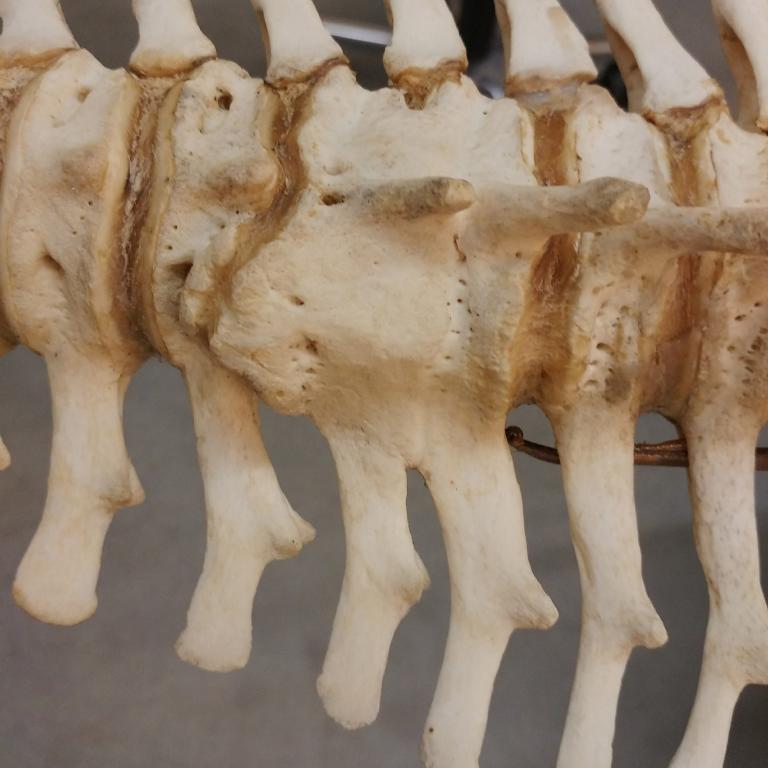
Many and more things can be examined form bones. In one of the early blogs, I looked closely at some of the strange bone issues we came across while cleaning dolphin skeletons. As the project continued, we see bone deformities so regularly that I started keeping a separate file of photos of these oddities. Though we have observed contortions caused by naturally healed broken bones, more frequently we noticed joints between the spinal vertebrae malformed with bulges, or vertebrae that are fused together. What do these observations mean? How did these funny bones come to be?
It turns out bone problems in cetaceans (whales and dolphins) especially those involving the spine, are well documented in scientific literature. According to an article published in 1999 (Turnbull and Cowan, 1999) there are primarily three different types of spinal disc issues; Discarthrosis occurs when joints in the spinal column are affected by degeneration of the vertebral disk. Infectious spondylitis is when spinal joints deformed via infection. Lastly, Spondyloarthritis is deformation caused by inflammatory arthritis. All of these can lead to joints between vertebrae developing bone growths (also known as osteophytes) which can affect the animal’s ability to swim. Cetaceans need to swim to survive, so if they cannot swim... well it can be a big problem.
Fused vertebrae. Imagine having to swim and forage with such a tail!
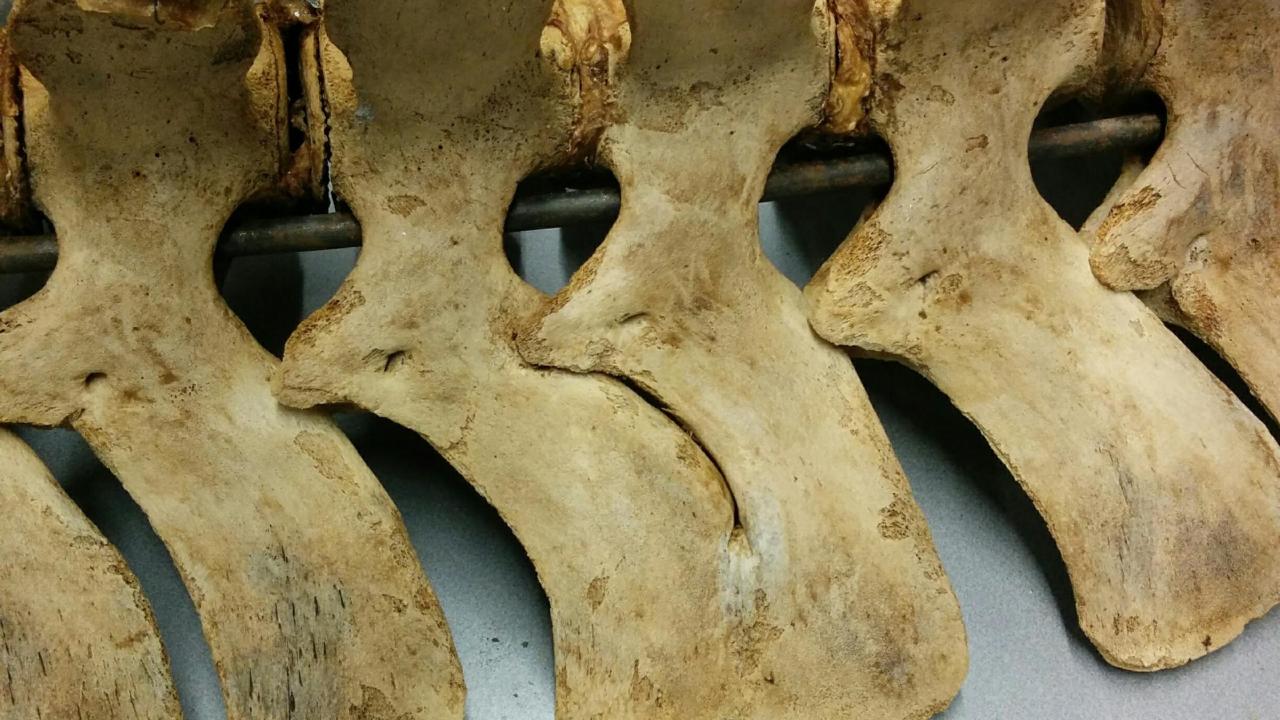
A study was conducted on osteophyosis (growth of osteophytes) on specimens of white beaked dolphins (Lagenorhynchus albirostris) in the collection of the Zoological Museum University of Copenhagen. Though it seems logical that a very large osteophyte would limit the movement of the animal, reducing the ability to find food and lead to reduced health, the study found this is not always the case. A specimen in the study that had the most severe bone deformity died with a thick layer of blubber on it, which implies that it was in good health at the time of death! This may be an outlier, though, as the study also found severe cases of osteophyosis among juvenile white beaked dolphins which suggest it can cause mortality. Perhaps it depends on how the osteophyte limits the movement of the animal. Finally, females to be more susceptible to these bone issues than males.
Of the three spinal disc issues mentioned at the beginning, the most common in cetacea is Spondyloarthritis, or bone deformity caused by arthritis. All mammals can get arthritis and there are many types of arthritis. Infectious arthritis is caused by bacteria, virus or a fungus. Non infectious arthritis is caused by crystals of chemical compounds in the joints. Arthritis can also be caused by joint disease, trauma, or illness related to diet or metabolism. A 2007 study compared rates of vertebral joint arthritisbetween primates and carnivores, and found that 5.6% of primates and 3.6% of carnivores were affected. Interestingly enough, within these groups it was the great apes and bears that were the most frequently affected. The study noted that larger animals are more likely to suffer from arthritis than small ones because of their larger body mass: the stress of moving these larger joints results in an increased chance of arthritis. Also, larger animals are exposed to more pathogens, some of which cause arthritis. We have not cleaned enough of the great whales to see many signs of arthritis or bone problems yet, but a study of 49 humpback whales stranded in Brazil found bone deformities in 10% of them, including not only arthritis but also evidence of spina bifida and fused bones. Arthritis has also been detected in the largest of the whale species, the Blue Whale.
The deformed bone of a Sei whale (Balaenoptera borealis).
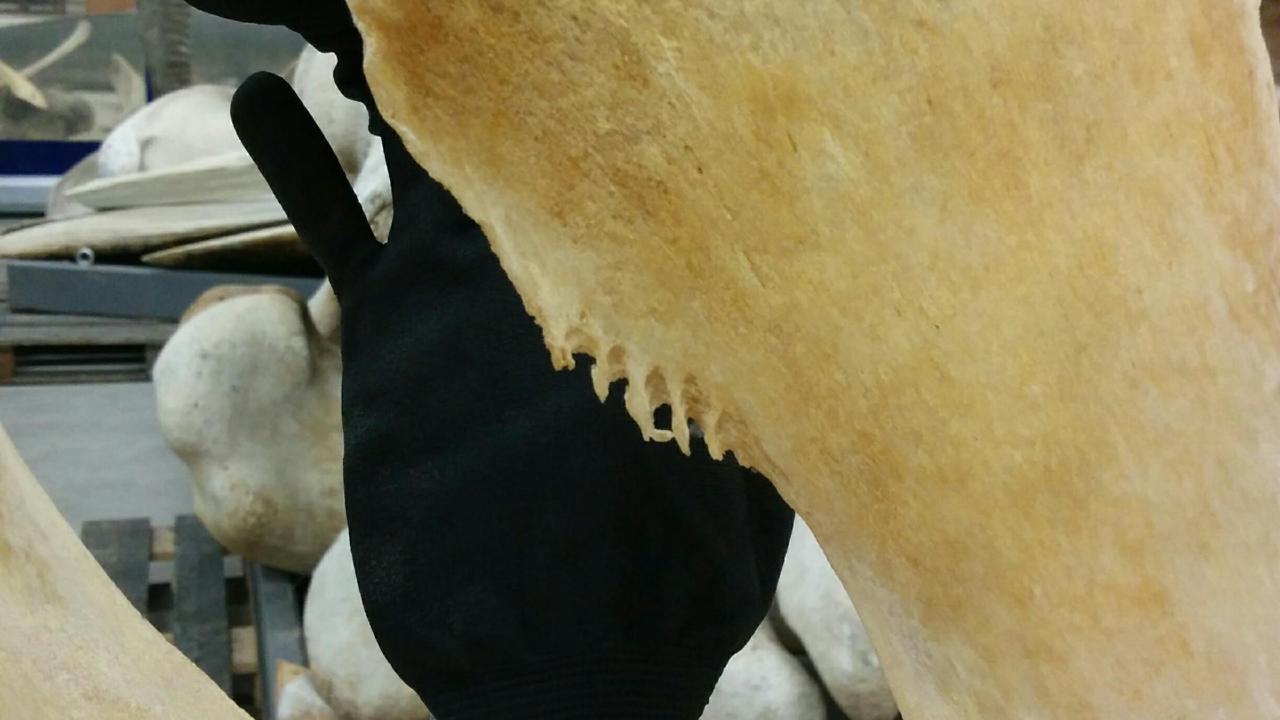
Now that the mounted dolphins are done and we are moving onto the bigger cetaceans, it will be interesting to compare the number of osteophyosis occurrences between great whales and smaller animals. Also, one of the strengths of museum collections is the fact you can observe specimens collected over a long time period. We can see when occurrences of osteophyosis are more frequent and from this perhaps infer something about the overall health of the ocean over time. The whale bone project is interesting because it gives us a chance to consider these specimens very closely, and really observe trends in the collection which might be otherwise overlooked!
Once again, a big thank you to Philips for their support of this project. With your donation of a Sonicare toothbrush and many heads we can insure proper curation allowing these whales specimens to remain in tip top shape for the next 200 years!
Totally fused vertebrae.
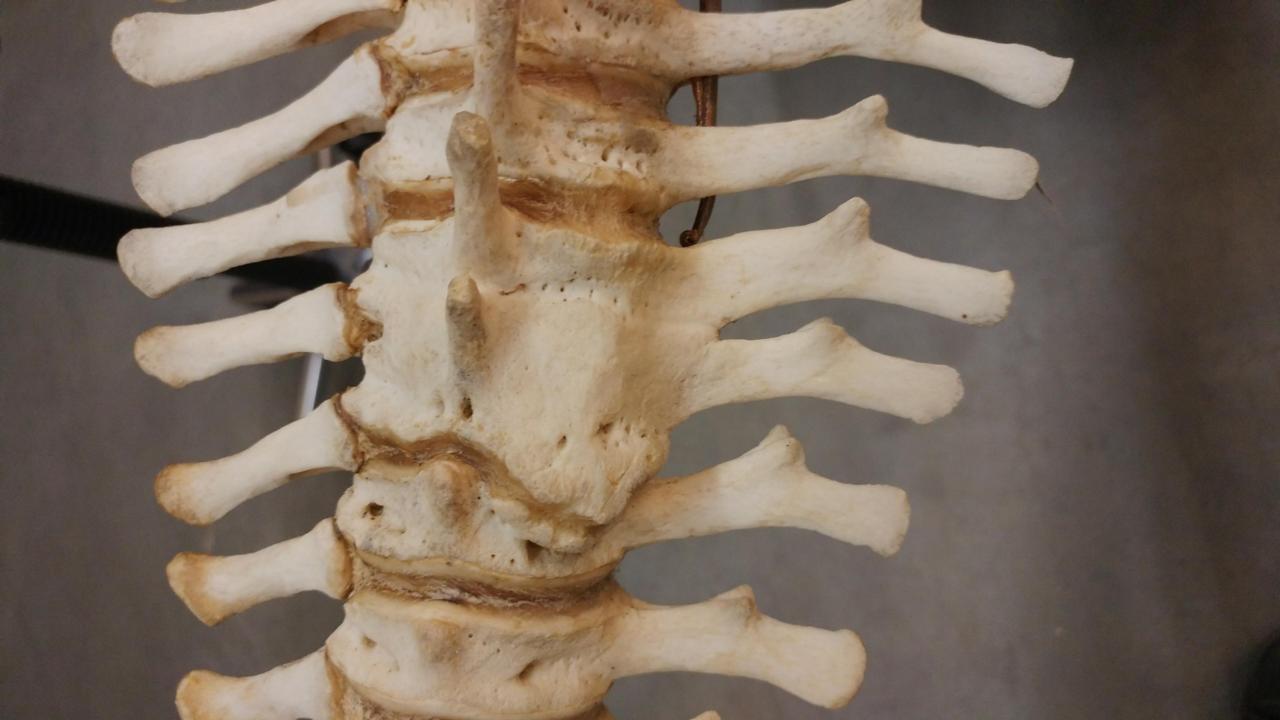
By Becky Desjardins,
Taxidermist, Naturalis Biodiversity Center
A shoulderblade with edge arthritis.
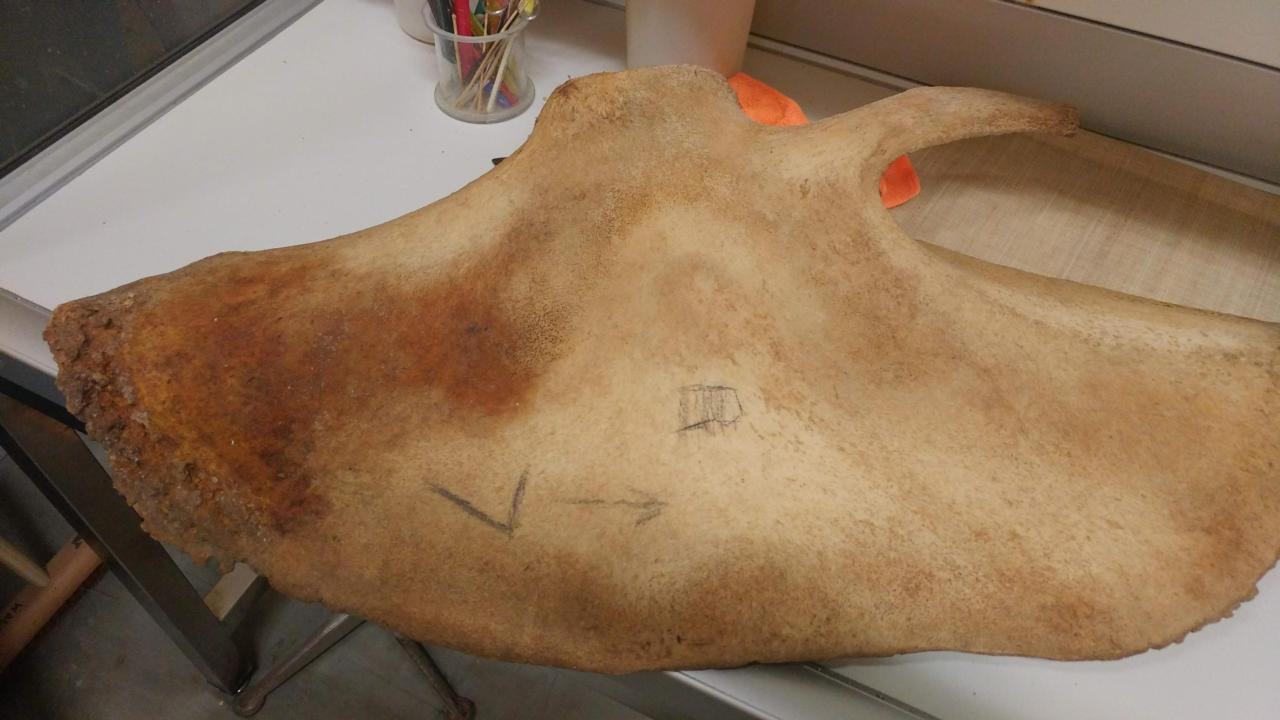
References
Galatius, A. et al. 2009. Occurence of Vertebral Osteophytosis in a museum sample of white-beaked Dolphins (Lagenorhynchus albirostris) from Danish waters. Journal of Wildlife Diseases, 45 (1): 19-28.
Groch, K.R., et al. 2012. Skeletal abnormalities in humpback whales Megaptera novaeangliae stranded in the Brazilian breeding ground. Disease of Aquatic Organisms 101: 145-158.
Nunn, C.L., Rothschild, B., and J.L. Gittleman. 2007. Why are some species more commonly afflicted by arthritis than others? A comparative study of spondyloarthropathy in primates and carnivores. Journal of Evolutionary Biology 20 (2): 460-470.
Turnbull, B.S., and DF Cowen. 1999 Synovial Joint Disease in Wild Cetaceans. Journal of Wildlife Diseases. Vol 35, No 3, July 511-518